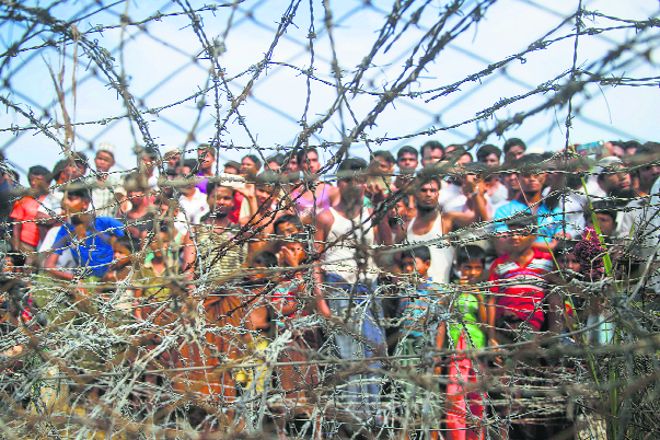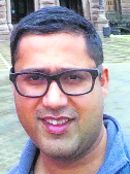
Exclusionary: Societal friction played a critical role in the military violence in Rakhine that led to a mass expulsion of the Rohingya to Bangladesh.
Luv Puri
Luv Puri
Ex-member of UN Secretary-General’s Good Offices on Myanmar
As the Citizenship Amendment Act (CAA) legislated by the Indian Parliament continues to be a subject of acrimonious debate, some ominous comparisons have been made with the citizenship process in neighbouring Myanmar, a country which was administratively part of the British India colonial project until 1937.
A degree of proportionality and perspective is needed to compare the approximately 53 million population of Myanmar and India with a population of around one and a three billion. However, lessons accrued from the experience of Myanmar’s exclusionary citizenship process may be noteworthy in a limited sense. This is particularly relevant to understand as to how the state project of exclusionary citizenship morphed into mass-scale societal friction that played a critical role in the 2016 and 2017 military violence in Rakhine that led to the mass expulsion of the Rohingya to Bangladesh.
The seeds of the exclusionary citizenship project in Myanmar were sowed by General Ne Win, a military dictator who ruled the country from 1962 to 1981. General Ne Win’s administration identified 135 national races of Myanmar, excluding the Rohingya. Building on that, his successor President San Yu passed a citizenship law in 1982. The law recognised three categories of citizens, namely, citizen, associate citizen and naturalised citizen. Full citizenship is granted to the descendants of residents who lived in Myanmar prior to 1823 or were born to parents who were citizens at the time of birth. 1824 is the year when the first Anglo-Burmese war took place. Associate citizens are those who acquired citizenship through the 1948 Union Citizenship Law. Naturalised citizens are those who lived in Myanmar before January 4, 1948, the date of the country’s independence, and applied for citizenship after 1982.
The 2008 Constitution that is still in operation has 135 national races enshrined. The authorities in Myanmar argue that the Rohingya are not a distinct ethnic group and that they are ‘Bengalis’. Numerous claims and counter-claims of history over the presence of the Rohingya in Rakhine, also known as Arakan before 1824, had been made.
However, facts demonstrate that the Rohingya were once part and parcel of the country’s political and electoral landscape. A Rohingya leader, who had been a Member of Parliament had even served as a federal minister in the early 1960s. Till 2010, the Rohingya even participated in national elections, though they were declared non-citizens in 1982. It was only in 2015 that the authorities took away their voter cards.
Facing criticism, including at the Security Council and General Assembly, President Thein Sein and his successor Aung Sung Suu Kyi’s National League for Democracy’s governments often cite the national verification card (NVC) process as their commitment to grant citizenship to anyone who fulfilled any of the three criterion. However, there is a catch as the Rohingya could only declare themselves as ‘Bengalis’ as Myanmar does not accept the Rohingya as an ethnic group. The 2014 census failed to officially enumerate the Rohingya as they boycotted the exercise.
The Myanmar leaderships consistently deny the claim that they are anti-Muslim. They cite the recognition of the Kaman Muslims as one of the indigenous ethnic groups listed in the Constitution.
In the post-2010 elections — catalysed by many variables, including the availability of greater right to free expression in the backdrop of the ongoing democratic transition that also unleashed old stereotypes against the Rohingya in the public domain — the citizenship project played out differently on the ground. In 2012, a case of sexual violence and murder of a Rakhine Buddhist woman sparked off inter-communal violence in Sitwe, central Rakhine, that led to internal displacement of both communities, including 1,20,000 Rohingya. The ruling political elite became even more rigid and shunned any accommodation. In fact, when the then United Nations High Commissioner for Refugees (UNHCR) António Guterres, who is now the UN Secretary-General, met President Thein Sein in July 2012, the President stated that his government was prepared to hand over the Rohingya to the UNHCR and then they can resettle the ethnic group in any third country “that are willing to take them.”
Belying the claims of the authorities, the animosity against the Rohingya morphed into Islamophobia across the country and not just Rakhine. Extremist Buddhist monk Wirathu became a symbol of hate as he peddled vitriol against the Muslims. Islamophobia became the trend among the vast swathes of the Buddhist community. A number of inter-communal riots took place across the country in 2013. In Meiktila, situated in central Myanmar, more than 40 people were killed. There was inter-communal violence in Yangon and Lashio of Shan state, situated in the north.
The ubiquitous presence of the social media acted as a force multiplier in peddling hate. The price of a phone SIM card came down from $1,400-$1,500 in 2010 to around $1. Social media companies lacked the ability to combat fake news and the state authorities were either inept or complicit.
The Fact-Finding Mission of the Human Rights Council that looked into the alleged human rights violations recent;y in Myanmar stated that the “extent to which Facebook posts and messages have led to real-world discrimination and violence must be independently and thoroughly examined.”
As a consequence of various cycles of violence, a total of just over half a million Rohingya are now left in Rakhine. The number living outside, particularly in Bangladesh, as stateless population, is more than two million. Myanmar is facing trial at the International Court of Justice (ICJ) for an alleged genocide, apart from being the subject of several human rights reports and mechanisms at the United Nations. The goodwill it generated in the democratic world after 2010 diminished.
Myanmar’s citizenship project demonstrates that an inclusive citizenship remains the best way to protect social cohesion, uphold national unity and international image.
Join Whatsapp Channel of The Tribune for latest updates.




























